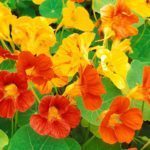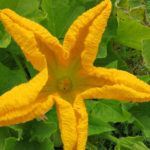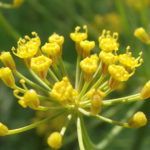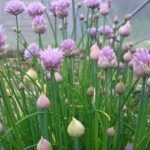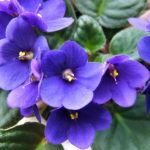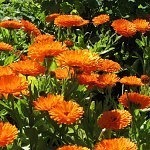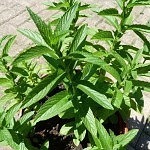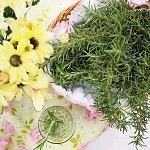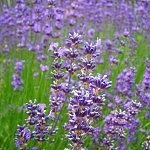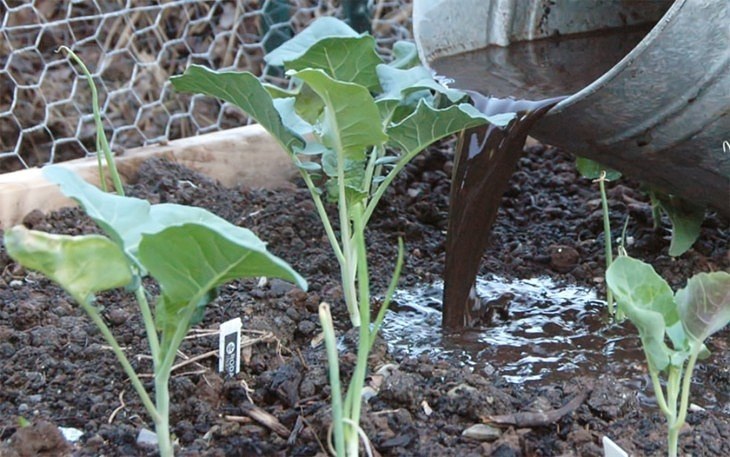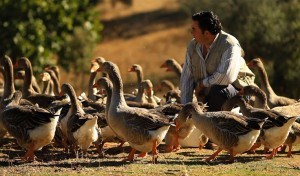Repurpose, Regrow, and Recycle – Food Waste Edition
In the United States, there are 6.3 million households with very low food security and over half a million people without shelter.
And yet, one out of every four calories intended for human consumption is never actually eaten. More than 20 pounds of food per person are thrown out and sent to landfills every month. Organic waste is the second highest component of landfills, and it produces massive amounts of methane. Methane traps 28 to 36 times more heat in the atmosphere than carbon dioxide, accelerating the process of global warming. When toxic substances in the landfills leak out into our soil and waterways landfills also poison plants, animals, the environment, and humanity.
It’s time we all do our part by reducing food waste.
Repurpose, Regrow, and Recycle
Each one of us can turn our own trash into a treasure by repurposing it, regrowing it, or recycling it.
1. Repurpose
That part of the plant or animal that you thought was useless may be filled with nutrients that your body needs. For example, common food scraps like beet greens, carrot greens, potato greens, and leek tops are packed with similar, and often times, more vitamins, minerals, and health-promoting compounds than the part of the plant that we commonly eat. Beet greens and potato greens can be used just like any other green, in salads, steamed, or sauteed, and carrot greens can be added to dressings and sauces like chimichurri and pesto.
When in Doubt, Dehydrate
If you don’t have the time to prepare these greens or you want to donate your leftovers to a food bank or homeless shelter, dehydrate them. Put the beet greens, carrot greens, leek tops, or any other greens that you will not be eating in your dehydrator at low temperatures (around 100 degrees Fahrenheit) until they are crisp. These dehydrated vegetables will last for up to a year. In fact, if they are stored in a cool, dry place (around 54 degrees Fahrenheit is ideal) and that has a very low moisture content, they can last for up to a decade!
These vegetables can be re-hydrated, eaten as chips, or turned into a powder by blending them together. Having your own greens powder will make it much easier for you to add greens to soups, salads, dressings, sauces, and smoothies. The same can be done with extra herbs as well.
Preserve Your Fruits Too
You can also use a dehydrator to preserve fruits that you won’t have the chance to eat. Simply blend the fruit together with some flax seeds or chia seeds until it becomes a thick, apple-sauce-like consistency and dehydrate it until it becomes fruit leather. This fruit leather can last from 6 months to a year, as long as it is stored in a cool and dry place.
Don’t throw out your organic lemon peels or orange peels either. You can turn your organic citrus peels into a natural vitamin C supplement. Simply cut them into pieces, dehydrate them, and blend them into a fine powder. Add this powder to smoothies, soups, dressings, sauces, or salads for an extra health boost.
Related: Homemade Vitamin C
Nothing Supersedes These Super Seeds
Avocado seeds can also be dehydrated and blended into powder. Adding a tablespoon or two of the seed powder to your meal may improve your cholesterol levels, and can be useful in the treatment of hypertension, inflammatory conditions, and diabetes. These seeds have also been found to have insecticidal, fungicidal, and anti-microbial properties. Other nutritious seeds like squash, sunflower, and pumpkin seeds can be saved, dehydrated, and eaten as well.
Dehydrating your vegetables is a simple and easy way to turn some of your most common food scraps into simple snacks and nutritious additions to meals. But what about the waste created from eating meat products?
Related: Things Health Nuts Do With Their Food
Bones and Organs
Muscle meat, like chicken breast and steak, is the most commonly eaten part of the animal, and yet it is the least nutritious. Yes, that burger is packed with complete protein and some vitamins & minerals, but you are missing out on the bones and organs, which can be the most nutrient dense part of the animal.
The bones and cartilage can easily be turned into a nutritious bone broth that provides you with minerals and amino acids that promote the health of your bones, heart, muscles, skin, and nervous system.
When it comes to organ meat, the most nutrient dense is beef liver. 100 grams of beef liver contain more vitamins and a greater amount of those vitamins than 100 grams of apples and 100 grams of carrots combined.
Before you throw out the bones and cartilage from that chicken, steak, or duck, simmer them in water for 8 to 24 hours and you’ll have a nutrient dense broth that you can drink or use as a base for soups. And don’t discard the organ meats either. There are plenty of recipes online that you can use to make them into a nutritious meal. If you are not a fan of eating liver, you can blend it up, dehydrate it, put it into capsules, and use it as a dietary supplement.
However, don’t just trust any meat products. Factory farms torture the animals, unhealthy animals produce unhealthy meat, and these practices are destroying the environment as we know it. For a multitude of reasons, please make sure that you are sourcing your meat and bones from farmers that use sustainable methods and treat their animals humanely.
Related: The Healing Effects of Bone Broth and How To Make Your Own
Egg Shells
If you are looking for a natural supplement that actually improves bone health, then don’t throw away your egg shells. Instead, wash them, dehydrate them, and grind them in a coffee grinder. This will provide you with a fine calcium-based powder that you can put in capsules or add to smoothies that may treat and prevent osteoporosis and improve bone and cartilage health.
Related: Homemade Calcium and Magnesium
2. Regrow
Many of the vegetables and herbs that we eat can easily be regrown without seeds. Sweet potatoes, potatoes, lettuce, celery, garlic, ginger, onions, fennel, cilantro, basil, oregano, cilantro, turmeric, and many other popular vegetables and herbs can all be regrown, providing you with an abundance of produce to feed you, your family, and those in need. If you end up growing too many vegetables, you can always donate your produce to soup kitchens and/or dehydrate the greens and herbs. Check out How to Regrow Your Favorite Herbs and Save Lots of Money. Also, click here to find a food bank near you, and Click here to find a homeless shelter near you.
3. Recycle
Even when you apply everything you have learned to repurpose and regrow your food scraps, you will still end up with some waste. Instead of throwing it out and sending it to a toxic landfill, start your own compost pile or just add those scraps to your soil to give your plants nutrition right away.
Related: 5 Cost-Effective Ways To Home Container Gardening – DIY
Here are examples of food items you can use to instantly nourish your soil and plants:
- Coffee grounds are an excellent source of nitrogen, which is an essential component of chlorophyll and protein that allows the plant to thrive. Mix them into the soil for best results.
- Eggshells give the plants their protein. Crush your eggshells into tiny pieces and scatter around your plants. They are also excellent pest repellents. Slugs and snails have difficulty climbing over the shells and onto the plants.
- Banana peels have potassium, which helps plants bloom profusely. And like eggshells, banana peels are pest repellents. To use them effectively, cut your banana peels into small pieces and bury them two to three inches deep to provide sustainable nutrition and pest defense for the plant. You can also rub the inside of the peel on the leaves of the plants to repel pests even more
- Citrus peels can be chopped up and scattered in the garden to keep your plants free from cats and dogs that try to use your garden as a litter box.
- Garlic can be buried around your plants to ward off different types of garden pests.
- Miscellaneous Food Scraps like fruit and vegetable peels and pulp can be buried directly in the ground near plants or between the rows of your garden. This keeps the soil rich, plants healthy, and pests away. The scraps will also feed earthworms, which greatly improve the health of the soil. Make sure you bury the food scraps deep enough in the soil so that they don’t attract critters and pests.
There are also a couple things that you should avoid putting in your garden including:
- Meat
- Bones
- Cheese
- Grease and oils
- Dog and cat litter
- Diseased plants
These attract animals and pests that will eat your plants before you can.
Putting It Into Practice
Think about what you can apply to your life right now. Are there some egg shells lying in your trash that could go into your garden? Are you wasting fruits and vegetables because you don’t have a dehydrator?
Implement whatever you can with whatever resources you have, and check back with this article again to apply something new every week. If you know of another way to re-purpose, reuse, or recycle your food waste please comment below or on social media, so we can let more people know.
By re-purposing, reusing, and recycling your food waste, you can heal the environment, nourish yourself, and feed the people that need nutrient-dense food the most. And when we unite our small efforts together, we can make big change happen.
Recommended Reading:
- Total Nutrition – Make your own Homemade Multivitamin and Mineral Formula
- Your Guide to Root Vegetables – Health Benefits, Recipes, and More
- Homemade, Vegan Nut Milk Recipes and More
Sources:
- Food Waste: The Facts — World Food Day USA
- Avocado (Persea americana) seed as a source of bioactive phytochemicals. — NCBI
- Home Dehydrated Food Shelf Life — Modern Survival Blog
- Easy, Homemade, DIY Fruit Leathers (How To + Recipe) — The Full Helping
- Liver: nature’s most potent superfood — Chris Kresser
- Eggshell calcium in the prevention and treatment of osteoporosis. — NCBI
- Home Composting Tips: A Guide to Composting Yard & Food Waste – Mass.gov
- Using Food Scraps In Your Garden — Off The Grid News
- Hunger and Poverty Facts and Statistics — Feeding America
- Basic Information about Landfill Gas — EPA
- 2016 State Of Homelessness — End Homelessness
